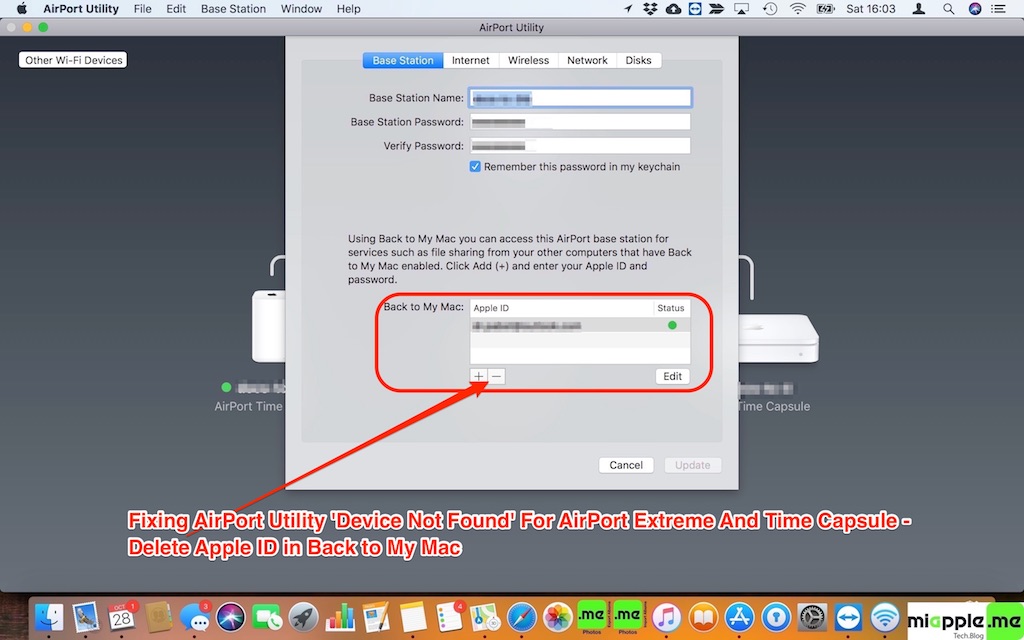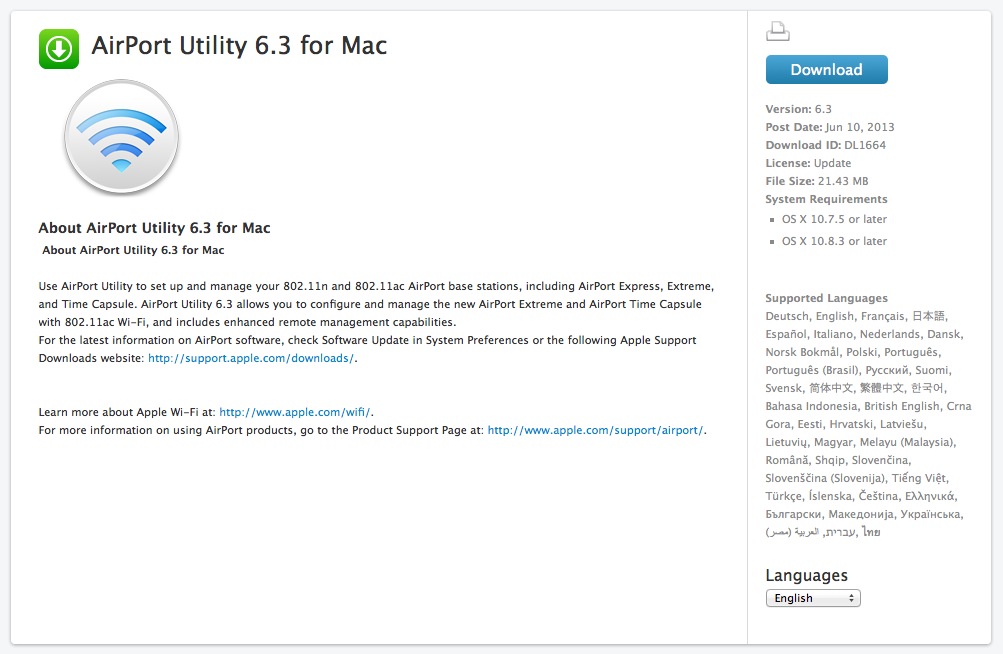
- AIRPORT UTILITIES FOR MAC FOR FREE
- AIRPORT UTILITIES FOR MAC UPDATE
- AIRPORT UTILITIES FOR MAC UPGRADE
- AIRPORT UTILITIES FOR MAC SERIES
- AIRPORT UTILITIES FOR MAC DOWNLOAD
But then two different names for the utilities could also be confusing. And because one would think that a version 6 is better than a version 5.6, the situation can become confusing. The fact that Apple now has two Airport Utilities raises the question about whether Apple should bury advanced features in a new version or have two versions.

AIRPORT UTILITIES FOR MAC SERIES
Other than the slightly glitzier look and some considerable loss of function, the new version is pretty much the same as the older 5.x series in its look and feel. Or you can let the AirPort Extreme issue it’s own DHCP addresses and specify the range. That keeps them all in the same subnet which is usually desirable. That means that if you already have a non-W-Fi router connected to, say, your AirPort Extreme, you can just let the Extreme pass the DHCP addresses on to your wireless devices. It still offers the ability, under the Network tab, to operate in “Bridge” mode. (At least, I couldn’t find them.) Finally, I couldn’t use AU 6 to manage an AirPort Express:īecause AU 6 is simpler, it’s easier for most average users to get going with. Advanced functions such as logging, statistics, SNMP control, display of MAC addresses, and IPv6 control are also missing.
AIRPORT UTILITIES FOR MAC DOWNLOAD
So if you need those seldom used functions in Lion, you’ll need to also download version 5.6. Wireless Distribution System (WDS) isn’t recommended on 802.11n networks anyway.

Access control allows you to specify permissible MAC addresses on your network. However, unlike the previous versions of AU, the configuration pages are semi-transparent which looks odd and doesn’t really add to the usefulness of the application.Īlso, there are some functions missing from version 6, namely explicit Access Control and WDS. Version 6 also makes it easy to see which devices are connected, at a glance, as shown above. From there, the pages (tabs) look a lot like the previous version of the app. The small gray information box has an Edit button so you can change the configuration. In the spirt of the iPad version, if you click on an icon appearing on the home page, you get some information. Of course, the reason why we have AirPort Utility 1.0 for iPad is so that customers who have a home Wi-Fi network but not a computer can configure the AirPort base station with their new iPad. If you’re still using Snow Leopard, you should continue to use Airport Utility 5.5.3, It requires at least OS X 10.5.7.Īirport 6 for Lion appears to be an attempt to bring visual harmony to the AirPort Utility series.
AIRPORT UTILITIES FOR MAC UPGRADE
Because version 6 isn’t as full-featured as the previous version, Apple has made an upgrade to the original app available, AU 5.6.
AIRPORT UTILITIES FOR MAC UPDATE
If you had been using AU 5.5.3 on Lion, the update will replace it with version 6. Its chief attributes are that is it has the look and feel of its iPad counterpart and is easier to use than previous versions. On January 30, Apple released Airport Utility 6.0 for Lion. But it also loses some functionality compared to the 5.x version. Hearthstone ain’t gonna play itself.Apple’s Airport Utility, version 6.0 introduces a graphical look that mimics that of the iPad version. I’ve got a life-such as it is-to lead, people. There are usually ways to do that remotely, as well, but explaining what you’d do for every version of every modem out there is far, far outside the scope of this article. …and then scroll down and select “Advanced.”Īfter that, “Restart Base Station” is at the bottom.Īgain, pretty easy! Of course, if restarting your Apple device doesn’t fix the problem, you may have to make the onerous trek to reboot your modem. Then tap “Enter Password” to make changes. So to check that out, open the app, and as before, tap on the device you’d like to restart.
AIRPORT UTILITIES FOR MAC FOR FREE
In any case, then you’ll need to enter the device’s password.Īfter you gain access, go up to your menus and choose Base Station> Restart.Įasy, right? And if you don’t want to even bother getting up to go to your computer-yes, I AM that lazy sometimes, so sue me-you should know that you can do this same thing from the Airport Utility iOS app, as well, which you can download for free from the App Store. It’s usually easiest to start with whichever one is highest up on the chain as a first troubleshooting step, but you can try each of them in turn if necessary. Click on your base station, or if you have more than a single Apple device configured, click on the one that you think may be misbehaving.

Then you should see a hierarchical view of the devices on your network. To do this, first you’ll open the Airport Utility program-it’s within Applications> Utilities. Whew, we really dodged a bullet there, guys. Time to trek to the basement and reboot your modem and your Time Capsule or Airport, right? Wrong! You can start with rebooting your Apple router to see if that fixes the problem, and it’s simple to do from your couch, no actual walking required. So you’re trying to watch Netflix, and your network speed has slowed to a crawl.


 0 kommentar(er)
0 kommentar(er)
